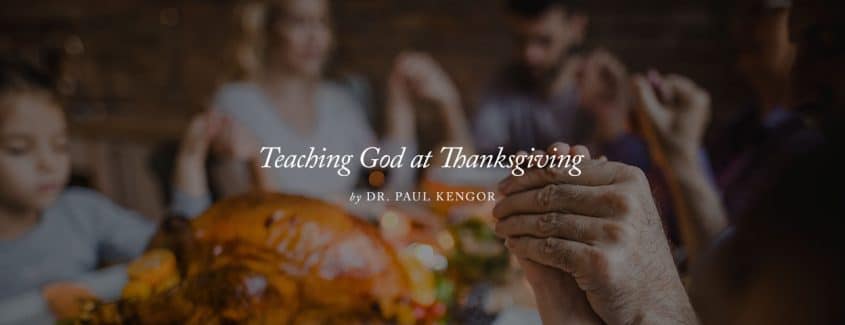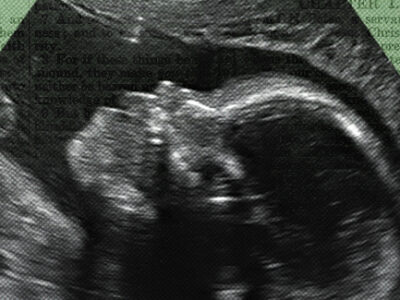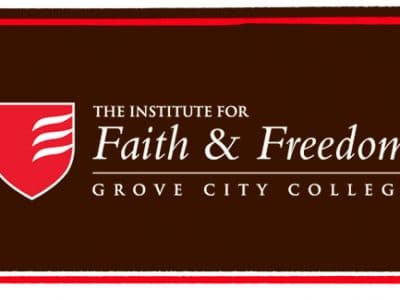
Every year at Thanksgiving I trek into Barnes & Noble for an annual ritual of self-mortification. I go to the children’s section and glimpse the offerings for Thanksgiving. It never ceases to be a painful experience.
A friend of mine works in that section, stocking the latest catalogue of books that the corporate folks funnel in. I recall my first Thanksgiving conversation with her a few years back.
“How are the Thanksgiving books?” I asked.
“You don’t want to know,” she groaned. She found only one book that mentioned giving thanks to God.
“Really?” I responded. “Who are they giving thanks to?”
“Well,” she said vaguely. “They’re just thankful.”
“’Thankful’ to whom?” I replied. She again emphasized: “They’re just thankful.”
I repeated the exercise this past Sunday. It was again agonizing. Among the books featured in the kids’ display: Five Silly Turkeys, How to Catch a Turkey, Where is Baby’s Turkey?
Notice a theme?
Of course, not all turkeys. One “Thanksgiving” book particularly caught my eye: Fangsgiving. Presumably a nod to the vampires involved in the pilgrims’ courageous endeavor.
Well, that isn’t Thanksgiving.
To be sure, I certainly have no objection to people being thankful. Gratitude is a good thing. During Thanksgiving at our family table, we take turns naming something were thankful for. But that must come after giving thanks first and foremost to God. God is the starting point. For Thanksgiving in America, that was the intent. That’s the lesson here, and should be the lesson especially in books for children provided by educators. If we’re teaching about Thanksgiving, how can we not teach that?
I was recently alerted to a Thanksgiving Day lesson at the website education.com, a go-to source for teachers. On the main page was a 60-minute lesson plan titled, “Giving Thanks for Thanksgiving.” “Thanksgiving offers an opportunity to teach young students about early days in the original colonies,” the plan informs us. “Students will discover the purpose and people involved in the first Thanksgiving.”
So far, so good. But read on.
The introduction instructs the teacher: “Call students together. Ask students to think about some of their favorite holidays and what they like to do on these holidays. Tell students that Thanksgiving is coming up. Ask students what some of their favorite Thanksgiving traditions are. Read Thanksgiving Day.”
Thanksgiving Day is one of three books recommended, none of which—notably—mention God or religion. Not one. There are, however, bountiful references to Native Americans, various tribes, corn, stuffing, potatoes, popcorn, yams, jelly, and turkeys. The Creator even gets trumped by cranberry sauce.
The “review and closing” portion of the “Thanksgiving” lesson concludes with these exciting guidelines: “Have students line up to present their Thanksgiving fact and what they are thankful for. Congratulate the students on their hard work. Encourage everyone to dig into the yummy food and enjoy having a Thanksgiving feast together!”
Dig in, kids, without a thought of thanking the Almighty.
Welcome, pilgrim, to the new world—a place, incidentally, that the pilgrims long ago fled to for religious reasons.
Speaking of which, why was Thanksgiving started in America?
In 1789, America’s first president proclaimed a “day of public thanksgiving and prayer.” George Washington implored the heavens to “pardon our national and other transgressions” and urged the citizenry to practice “true religion and virtue.”
Imagine that. In fact, try to imagine a modern lesson plan at education.com asking students to line up and share their favorite virtue, or (gasp) Biblical character or verse, or prayer.
How inappropriate would that be? It wasn’t to Abraham Lincoln.
In 1863, President Lincoln urged his countrymen to set aside the last Thursday of November “as a day of Thanksgiving and Praise to our beneficent Father who dwelleth in the Heavens.”
Subsequent presidents continued this civic-religious tradition. It was, after all, just that: a public holiday proclaimed to give thanks explicitly to God.
President John F. Kennedy, in his first Thanksgiving proclamation, offered a civics lesson as well as a prayer: “More than three centuries ago, the Pilgrims, after a year of hardship and peril, humbly and reverently set aside a special day upon which to give thanks to God. They paused in their labors to give thanks for the blessings that had been bestowed upon them by Divine Providence.” Quoting the Bible, President Kennedy affirmed: “It is a good thing to give thanks unto the Lord.”
Sure is. But that, ladies and gentlemen, was the old America. In the New America, we apparently know better. Leave it to our modernists to try to redefine and remake Thanksgiving in their own image. And must our schools seem so allergic to giving thanks to God, even at Thanksgiving?
Look, obviously it’s good to be thankful. If we’re teaching children about Thanksgiving, however, let’s at least teach them what it was supposed to be about.




